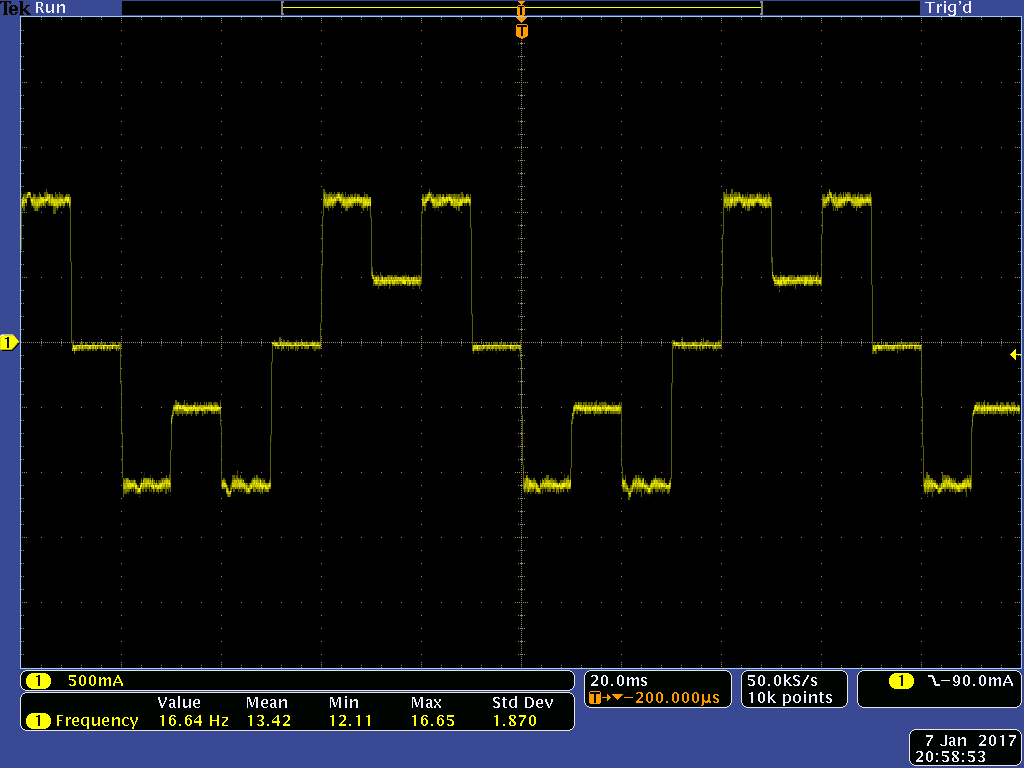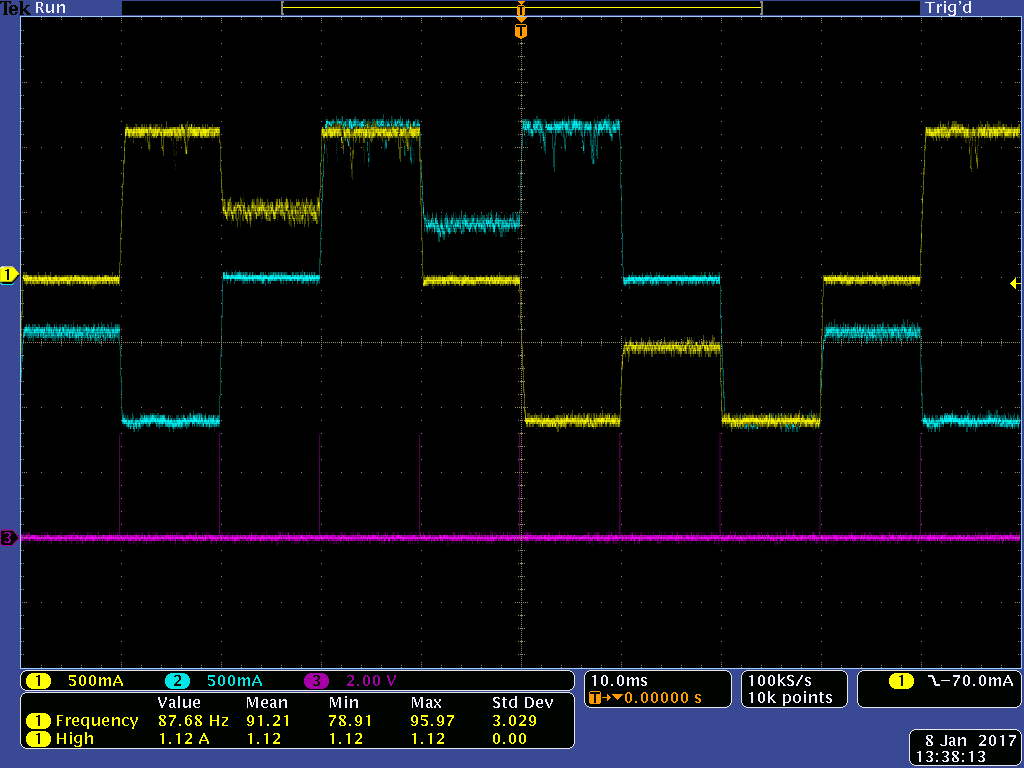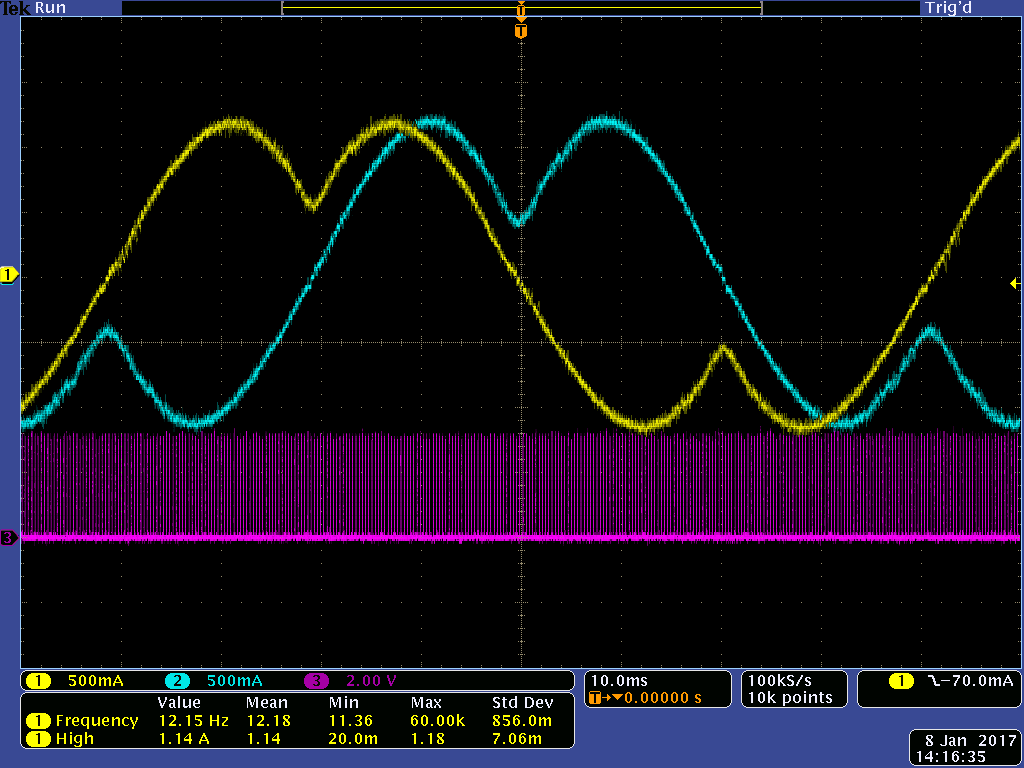Hey E2E,
I recently got a DRV8711 stepper driver board up and running. Today I hooked the stepper motor up to a scope with a current probe, because I was noticing some bad vibration at pretty much all speeds and microstepping modes.
I found that the motor's current waveform has a strange double peak, kinda like the microstepping indexer gets reset to a previous value after topping the peak. I'm sure that's not what's actually happening, but that's what it looks like.
This waveform was taken with 1/64th microstepping. The double peaks are present all the way down to 1/2 microstepping, as shown in the next waveform.
With microstepping disabled, I get a good square wave, as expected.
During this testing, I was reading through the 'DRV8711 Decay Mode Setting Optimization' app note. I was able to detune the driver to reproduce most of the issues listed, and then adjust it back to fix the issues, but through all this testing the only way I was able to get rid of the double peak was by bending the waveform so far out of shape that the motor squealed.
Has anybody experienced this before?





